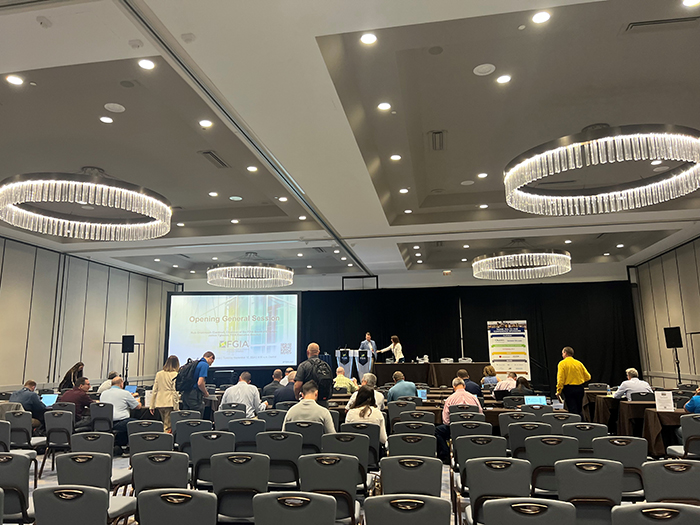
The Fenestration and Glazing Industry Alliance held its 2024 fall conference in Minneapolis, Minnesota, Sept. 16-19. Session topics ranged from life cycle assessments for vinyl products, architectural colors trends, safety in glass, new energy codes and more, all future-focused.
EPDs and sustainability
Life cycle assessments, or LCAs, are a method for identifying the environmental impacts of a product, process or activity over its lifespan. At the FGIA conference, Richard Braunstein, vice president of research and development for Oldcastle BuildingEnvelope, gave a presentation outlining exactly what LCAs are and how companies can use them.
LCAs are very data-intensive projects, he says. However, the benefit of having the data is that companies can then use it internally to build a better product, better initiatives or product designs. Externally, companies can upload the information to their sustainability page, satisfy sustainable purchasing/supply chain requirements and satisfy customer requests.
An LCA is the systematic analysis of the potential environmental impacts of products or services during their life cycle, whereas an environmental product declaration, or EPD, quantifies environmental information about the life cycle of a product.
“An EPD is not just an LCA in a pretty document…it's quite different,” says Braunstein. He adds that it’s simpler than an LCA; specifically it simplifies the process of getting to the “meat.,” protects sensitive manufacturer information, aids in product comparability and is third-party certified.
There were also presentations on embodied carbon legislation on the federal and state levels and forever chemical pollution specifically in Minnesota.
The role glass can play in safety
A panel on safety-focused glazing and glass products was also held at the FGIA conference. Panelists included Lothar Erkens of Winco Window; Matt Manning of Oldcastle BuildingEnvelope; and Vaughn Schauss of Kuraray.
Manning discussed ballistic glass and defined it as laminated glass that has been designed and tested to withstand attack for a specific weapon. Manning says that installing ballistic glass in a standard, untested frame can create a weak point and increase the potential for life safety issues. The fenestration strength much match the glass strength.
Schauss discussed glass's role in increasing school security. Schauss says most school shootings start and end in less than eight minutes. The goal with security glazing is to "run out the clock and buy everyone more time" for first responders to arrive and to find a safety, he says.
Schauss says the new standard ASTM F3561 is gaining popularity in the industry, including a proposed bill in Tennessee to require it in schools. "Providing deterrents can slow shooters down and give those in the building an opportunity to get away,” says Schauss.
Erkens educated attendees on blast resistance. He walked through the different distances and testing procedures that can be used when testing blast resistance on glazing elements.
Color trends and other sessions
FGIA also held a session on architectural color trends, led by Kiki Redhead of Sherwin Williams. Redhead says companies can request a "custom color development" for their product, which includes steps like trend identification and research, trend analysis and trend forecasting. Redhead also said that many factors contribute to what colors are trending at any given time, especially major world events.
For example, the 2008 housing crash contributed to stark white being a popular color in homes because people wanting to sell their homes were aiming for a clean, new look. Whereas the COVID-19 pandemic made people lean more towards warm, comforting tones like cream as they spent more time in their homes.
The next FGIA event is the FENBC Region Technical Summit Nov. 5-6 in Surrey, BC, Canada.


